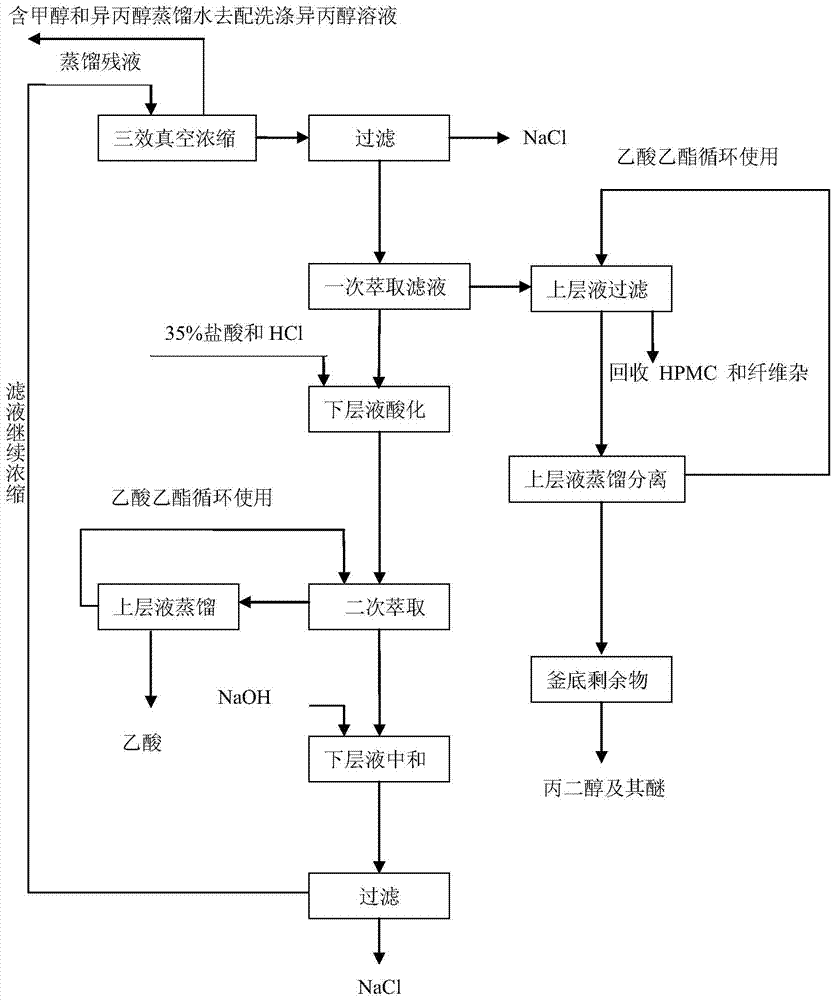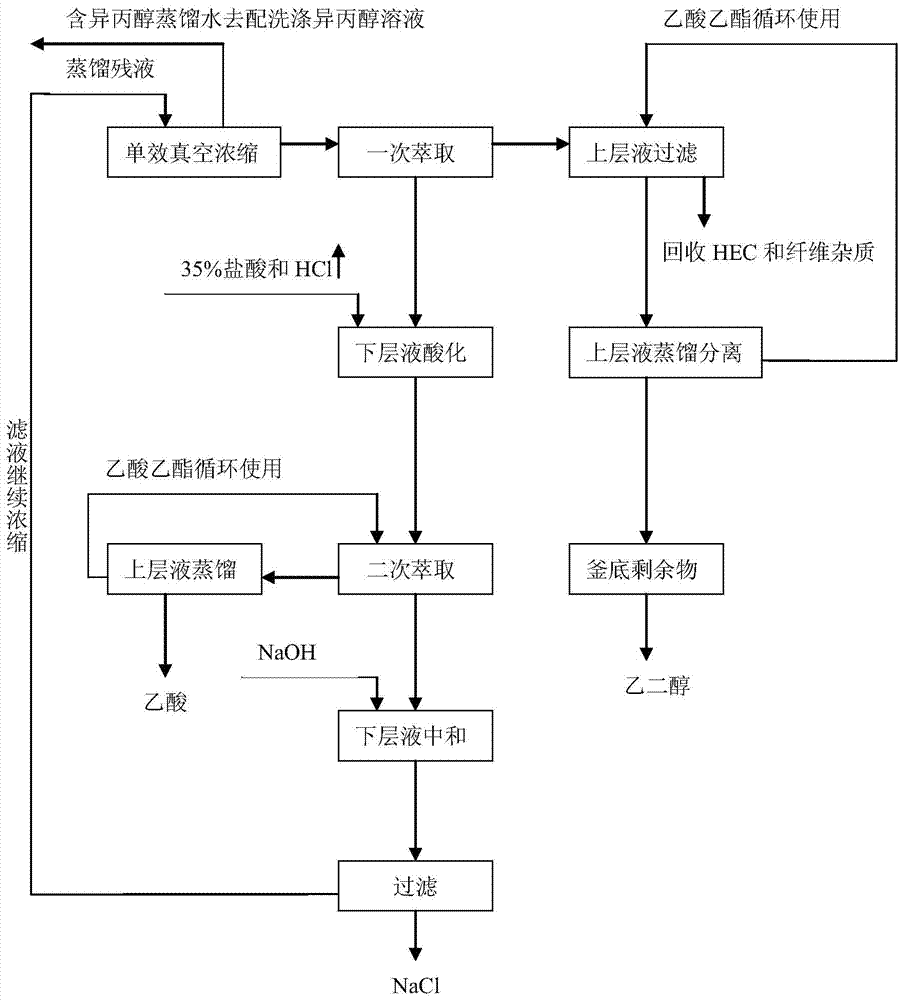Treatment method adopting cellulose ether solvent to recycle vinasse
A cellulose ether, recovery and distillation technology is applied in the treatment of cellulose ether solvent recovery and distillation residue, which can solve the problems of difficult three-waste treatment, affecting the survival of the industry, and inability to produce new cellulose ether products.
- Summary
- Abstract
- Description
- Claims
- Application Information
AI Technical Summary
Problems solved by technology
Method used
Image
Examples
Embodiment 1
[0028] Hydroxypropyl methyl cellulose (HPMC) separation waste liquid treatment process after solvent recovery:
[0029] Table 1: Chemical composition of the primary separation liquid after precipitation in the HPMC production process
[0030] Substance name
Sodium chloride
Sodium acetate
HPMC
methanol and isopropanol
water
content
4-8%
0.5-1.2%
1.5-2..5%
0.2-0.3%
0.5-0.8%
93.3-87.2%
[0031] Note: Due to the different models of HPMC, the chemical substance content of the separated waste liquid is also different.
[0032] Waste liquid treatment process: use a three-effect vacuum evaporator to concentrate the HPMC separation waste liquid to a sodium chloride content of 40-60%, the concentrated hot water contains methanol and isopropanol to mix the HPMC washing liquid, and the concentrated liquid is centrifuged for chlorination Sodium; the centrifuge is cooled to 0-60°C to the ex...
Embodiment 2
[0034] Embodiment 2, carboxymethyl cellulose (CMC) production process Solvent recovery distillation raffinate treatment process:
[0035] Table 2: The chemical composition of the residual liquid recovered by solvent distillation in the production process of pure CMC
[0036] Substance name
Sodium chloride
sodium glycolate
CMC
water
content
20-30%
8-15%
0.5%
1-1.5%
70.5-53%
[0037] Note: CMC product specifications are different, the chemical composition of the distillation raffinate is also different; the chemical composition is different with different distillation degrees.
[0038] Distillation raffinate treatment process: Distillation raffinate is concentrated by single-effect vacuum to a sodium chloride content of 50-60%, evaporated hot water contains ethanol, and is mixed with CMC washing liquid, the concentrated solution is filtered to recover sodium chloride, and the filtrate is cooled to 0- Add 3...
Embodiment 3
[0039] Example 3, hydroxyethyl cellulose (HEC) solvent recovery distillation raffinate treatment process:
[0040] Table 3: Chemical substance composition of the residual liquid recovered by solvent distillation in the production process of pure HEC
[0041] Substance name
Ethylene glycol and its ethers
Isopropanol
HEC
water
content
15-30%
20-35%
0.5%
1.5-2.0%
63-32.5%
[0042] Note: HEC product specifications are different, the chemical composition of the distillation raffinate is also different; the chemical composition is different with the degree of distillation.
[0043] Distillation raffinate treatment process: the above distillation raffinate is concentrated by single-effect vacuum evaporation, the moisture content of the raffinate is concentrated to 0%-35%, cooled to 25-70°C, and extracted once with ethyl acetate; ethyl acetate and concentrated The weight ratio of the raffinate = (0.5-10): 1,...
PUM
 Login to View More
Login to View More Abstract
Description
Claims
Application Information
 Login to View More
Login to View More - R&D
- Intellectual Property
- Life Sciences
- Materials
- Tech Scout
- Unparalleled Data Quality
- Higher Quality Content
- 60% Fewer Hallucinations
Browse by: Latest US Patents, China's latest patents, Technical Efficacy Thesaurus, Application Domain, Technology Topic, Popular Technical Reports.
© 2025 PatSnap. All rights reserved.Legal|Privacy policy|Modern Slavery Act Transparency Statement|Sitemap|About US| Contact US: help@patsnap.com



